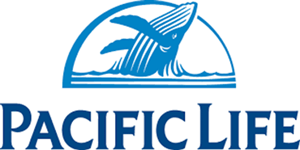Insuring a successful ECM deployment with EzeScan

Based in Newport Beach, California, Insurer Pacific Life has successfully used EzeScan capture technology to improve user adoption of a newly deployed OpenText content management system.
The company recently changed its content management system over to OpenText and was facing an issue with user adoption. Staff in the Corporate Secretary’s office were comfortable with the old system and were frustrated at having to input the information manually, which they were finding far too convoluted and time-consuming. They needed a more streamlined way of uploading the documents, attaching metadata, renaming the files and making them OCR compliant.
Pacific Life has been offering insurance products for over 145 years. It provides a wide range of life insurance products, annuities, and mutual funds, pension plans and offer a variety of investment products and services to individuals and businesses. Pacific Life counts more than half of the 100 largest U.S. companies as its clients.
The Corporate Secretary’s office at Pacific Life deals with all of the paperwork associated with any company acquisitions and equities. The department handles all information and directions from the board as well as all official company records. The files it handles are often very large and complex legal PDF documents.
Jessica Nilsen, Senior Business Analyst, ECM at Pacific Life had worked with EzeScan in a previous role. She knew from experience that it had the ability to take a file from a shared location and register it directly into OpenText, attach all of the metadata and remain in keeping with the naming convention, all with minimal user intervention.
Initially, the EzeScan solution was implemented as a desktop client with users required to send all documents to the approver to process. Pacific Life has now implemented the EzeScan WebApps Remote Indexing solution.
Previously there was a queue of documents to process which would have taken a day or two to handle. With EzeScan in the process it now takes less than 2 hours, which represents a huge saving both in time and resources.
The next phase was to introduce the EzeScan File Upload WebApp which enables users to simply click on a link, upload a document, select metadata with cascading categories and attributes and then send it on for approval, all via a URL link. In this case all the approver needs to do is check that the document contains the correct metadata and then files it according to the naming convention.
In addition to the Web App solutions, Pacific Life has also implemented the EzeScan Server solution within its marketing department.
To comply with industry regulations, all final marketing documents must be available within the OpenText ECM. EzeScan Server works in the background to ensure this is done without any user intervention.
When documents are uploaded to a secure network shared folder EzeScan automatically takes the index file, populates the metadata values for the category and then pushes it into the correct OpenText department folder. Folder structures can be created automatically if required by EzeScan during the upload process.
Originally Pacific Life planned to have a cloud based storage mechanism to handle this but the development cost for a 3rd party to make the searchable information compliant was too expensive.
“Implementing the EzeScan solution was very simple. Once you understand the terms it is very easy for any user without technical experience to build the jobs,” said Jessica Nilsen.
“Once it’s set up and integrated into the content management system it is very easy for end users to build their own solutions”.
Users can handle their own design and configuration without any technical knowledge, since EzeScan utilises templates to build the jobs and upload. There is no “per page” click charge when scanning and the whole process is very simple compared to other tools, which often require scripting capabilities and additional development resources.
An additional benefit is the fact that it only took less than four days in total to complete the installation, rather than weeks.
Getting the Corporate Secretary’s office to embrace the OpenText ECM system had taken three months, and after sixteen hours of training sessions it remained a challenge with users still struggling and wanting to give up on it.
However, Jessica said “once the EzeScan solution had been implemented they found the training extremely easy and only needed a single one-hour training session to become fully competent”.
The improvements seen in user adoption within the Corporate Secretary’s office have been huge. In time saving alone users are now able to process documents in three minutes on average, whereas previously they would have spent about 20 minutes trying to figure it out and then still resorting to making a phone call to our help desk for guidance.
Additionally, the retrieval of documents has been improved dramatically, as not only have the naming conventions been standardised but previously users often didn’t bother to OCR documents, so the content wasn’t text searchable. Now this happens automatically via the EzeScan Server during upload, so confidence in the system has improved dramatically.
Ultimately the increased confidence now means that the previous system can finally be retired, which frees up storage space and saves Pacific Life money because they aren’t paying for duplicate systems and storage.
In the future Pacific Life are looking to expand the solution and make it an enterprise wide technology that will replace all the other capture systems through the company.
Jessica suggests that within the industry many companies rely on keeping accurate records and need the metadata that sits behind them … “but nobody wants to add it”. Users don’t want to take the time to add it but the indexing capability EzeScan provides now makes this possible.
